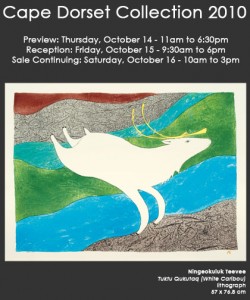Cognitive Media
The Cognitive Media website is an elaborate advertisement for their services. It does not share the technology behind it but it is basically a group of artists performing visual representations of other people’s ideas. Elaborate visual notetaking is a method that may work for those students who do not like copious written assignments or are auditory/visual learners. One could show this website to a student and offer an alternative assignment to an essay on a topic. I had a first nations adult student how would jump at the chance to do this type of an assignment. It could also be video recorded just like the Cognitive Media artists an edited so that his work could be shared electronically on his band’s website; which routinely showcases the accomplishments of their students (like a local band’s paperless newsletter)
I admit that following the technology behind the visual that accompanied Sir Robinson’s lecture in a previous blog only resulted in an idea for an adaptation for one student’s learning but it ended up being something I could use for my research on technology integration for adult first nations students.
November 20, 2010 No Comments
Royal Society for the encouragement of Arts, Manufactures and Commerce (RSA)
I revisited Marian Thatcher’s blogspot which is focused on adult eduaction and technology, and it had a new post that talked about an animation by Sir Ken Robinson about Concept Animation. It reminded me of way back when teacher’s used to have to draw their visuals on the chalkboard. I remembered that I always loved the drawing the most rather than copying the words from the board for notes. The blog had imbedded a youtube video showing Sir Robinson in action. I could use the link as a discussion starter for students stumped or frustrated with the limits placed on how a student usually tries to show their knowledge. We could brianstorm other methods of showing their course learning than the usual written essay.
November 20, 2010 No Comments
NIH tech research and adult centers
This NIH webpage supported a previous observation I made about a gender gap between those teachers who were willing to use computers and those who were against utilizing any new technology in their classrooms. This site revealed results of a psychological study done. Some of the results were that older people were less likely to utilize computers to access the email or information on the world wide web due to computer anxiety, fluid intelligence, and crystallized intelligence. These were important predictors of the use of technology. Some training strategies to promote technology adoption were also discussed.
November 20, 2010 No Comments
Factors Influencing the Effective Use of Technology for Teachings and Learning
This webpage is actually a part of the ERIC database (Education Resources Information Center). The site is one of the few you can actually access a full text pdf of an article without paying or being a member (with hidden costs). The article, Factors Influencing the Effective Use of Technology for Teaching and Learning: Lessons Learned from the SEIR-TEC Intensive Site Schools. 2nd Edition, is valuable to any research focused on the uses of technology in the classroom; not just for adult education centers. I found it interesting that the article mentioned that one of the factors that influence the use of technology in the classroom also depends on the ability of the teacher to use the teachnology as well. The article focused on the years 1995 to 2000, a whole 10 to 15 years before I read it but it is still true today. I have recently encountered teachers not open-minded to the use of technology because they don’t know how to use it either. I have also noticed a generation gap between the teachers who are incorporating technology and those set against it.
November 20, 2010 No Comments
Native American Radio
http://www.knba.org/

Koahnic Broadcast Corporation (KBC) operates out of Alaska and is a First Nations radio network. The programming, which is sometimes shared with NPR is centred on Indigenous news and issues. Live streaming is available. The website and the programming seem to be only in English. However, there is a word of the day section on the site that highlights a word from one of the Indigenous languages spoken by the listening audience.
I listened to the stream of a program called Native American Calling for a while and the interview was very interesting. The subject of the interview was an Alaskan musician who was asked the story of how he chose his profession. The answer was told in the form of a beautiful story about a relative who was the last fluent speaker of his language in the family. This struck a chord with me after doing research for my analytical paper. Callers also brought up the issue of language revitalization. There is a real urgency voiced about saving languages. . . even if it is being stated in English.
The news section comes mostly from wire sources. The first story about Indigenous people was not until the middle of the page. http://www.publicbroadcasting.net/kbc/news.newsmain
I also learned that it’s warmer in Anchorage than it is in Lethbridge.
November 19, 2010 No Comments
Throat Singing – Blending traditional and modern styles
Tanya Tagaq and Cellina Kalluk throat singing
In Inuktitut, throat singing is called katajjaq, pirkusirtuk or nipaquhiit depending on the Canadian Arctic region. I was intrigued the first time I heard traditional, Arctic throat singing – likely on CBC Radio One. It seemed a music form in and of the past until I heard about Tanya Tagaq collaborating with Bjork.
From a little listening, reading and watching online I have learned more about the history of this music, how young people are being attracted to it, and the struggle between elders wishing to preserve the traditional throat songs and the young who want to make the singing relevant to their lives.
To learn more, I recommend the following links:
“Throat singing gets a modern twist.” CBC audio broadcast (March 17, 2002). Hear young musicians blend traditional throat singing with other musical styles like rock and pop and rap.
http://archives.cbc.ca/sports/more_sports/clips/6667/
“Preserving the sounds of the Arctic tundra: Throat singing” (2005). An article about the resurgence of throat singing.
Tanya Tagaq – Tanya explains and demonstrates throat singing. Video, 3 min.
https://www.youtube.com/watch?v=Phr1HVwrjlQ
Tanya Tagaq and her cousin Cellina Kalluk – This site has written information and links to audio and videos.
http://thepuredrop.com.au/artists/tagaq.htm
“A string quartet in her throat.” Collaboration of Kronos Quartet and Tanya Tagaq. Video, 7 min., 2006. Tanya says this work fulfilled her dream to “interpret her home through musicians.”
https://www.youtube.com/watch?v=0YTtUolJa9E&NR=1
Kathy Keknek and Janet Aglukkaq – Application for traditional performer at 2008 Arctic Games. Video, 6 min, 2007.
November 19, 2010 No Comments
Changing Art in the North: A reflection of social and environmental realities
Since the 1950s, Cape Dorset or Kinngait, the “Capital of Inuit Art” has been a centre for drawing, printmaking and carving. Today, printmaking and carving are the community’s main economic activities. But some older artists along with younger ones are creating art of a different nature, art that is less known and less valued in southern Canada – art that reflects the artists’ changing social and environmental context. The video “The New Raw” focuses on this situation.
The New Raw
Video 11 min. Radio Canada International (RCI)
Interviews with Cape Dorset artists and footage of their art inform the viewer of the diversity of northern art. The viewer hears that southern Canadian art lovers still seek and maintain the demand for Arctic art with traditional images – the animals of Inuit legends – but there is a growing number of Cape Dorset artists who produce art reflecting the social and environmental change of their day-to-day realities.
http://eyeonthearctic.rcinet.ca/en/video/video-categories/viewvideo/59/art-and-culture/the-new-raw
See also these RCI videos:
The Rebel – Jutai-Toonoo, 26 min.
http://eyeonthearctic.rcinet.ca/en/video/viewvideo/60/art-and-culture/the-rebel-jutai-toonoo
The Up-And-Comer – Ningeokuluk Teevee, 8 min.
http://eyeonthearctic.rcinet.ca/en/video/viewvideo/64/art-and-culture/the-up-and-comer-ningeokuluk-teevee
The Carver – Toonoo Sharky, 8 min.
http://eyeonthearctic.rcinet.ca/en/video/viewvideo/61/art-and-culture/the-carver-toonoo-sharky
The Printer – Niveaksie Quvianaqtuliaq, 7 min.
http://eyeonthearctic.rcinet.ca/en/video/viewvideo/62/art-and-culture/the-printer-niveaksie-quvianaqtuliaq
Note: In this video we see the making of the print of “Stiletto,” an example of a more modern stone cut art piece by Kavavaow Mannomee.
November 19, 2010 No Comments
The Indigenous Studies Portal (iPortal)
The Indigenous Studies Portal (iPortal)

Developed by the University of Saskatchewan library, iPortal has a over 30 categories of links related to Indigenous issues. According to the “About” page, the site hosts over 21,000 records.
As an example, the link to Languages has further links for Algonquian, Cree, Athabaskan, Dene & Na-Dene, Eskaleut – Inuktitut Aleut Copper, Iroquoia, Language Legislation, Michif, Mixed Languages, Oratory Skills & Practises, Origins & Movement, Preservation, Salishan, Siouan, Systems: Writing, Signing, Toponymics, Tsimshian, Wakashan. Each of these links refers to a page of selected articles. I wish I had come across this earlier in the process of writing my analytical paper.
This is a terrific resource! The only problem for our use is that the University of British Columbia is not one of the recognized institutions. This makes it a little more difficult to find linked resources. Luckily, the site also provides an easy Google Scholar search that can be used to find the resources outside of the educational framework.
November 19, 2010 No Comments
Harnessing technology to Serve Adult Literacy
Wow, I really liked discovering this page. It was chalked full of links to ideas, lesson plans, and tutorials all aimed at adult learning centers. The site even has links to software aimed at adult education settings and further links to reviews on the software. This site would be helpful to me personally at the job level but not really at the research level for theories etc.
November 18, 2010 No Comments
Indigenous Language Research, Development & Preservation
SIL International
Indigenous people living in remote regions in countries in the South focus on linguistic barriers to education; often the majority of people can not read or write in any language. In my research, I found the ngo SIL International frequently mentioned as assisting in indigenous communities with non-formal education programs in the mother tongue and with the production of educational materials.
The SIL website says its role in language development is “one of partnership with the local community, providing knowledge about language and culture to help communities make decisions and plan how they want their language developed.”
SIL has a long history of language research and development and preservation. Its website is interesting to explore.
For example, SIL’s publication index for Canada led me to SIL linguist Bill Jancewicz’ article Applied Computer Technology in Cree and Naskapi Language Programs in Language Learning & Technology, Vol. 6, (2), May 2002, pp. 83-91 available at http://llt.msu.edu/vol6num2/jancewicz/default.html
This article gives insight into the challenges and successes in the work of integrating computers into indigenous language development programs.
November 18, 2010 No Comments



